This post is also available in:
![]() Français (French)
Français (French) ![]() Русский (Russian)
Русский (Russian)
By Olga Fromentin
Sonja Björk Grant runs a multi-functional coffee company Kaffibrugghúsið in Reykjavik, Iceland. In the interview with Madame Success, Ms. Grant shares how she grew from being a carpenter to one of the World Barista Championship founders. She reveals the secrets of exceptional coffee making and how love for challenges helped her find her passion and grow several successful coffee businesses. We also talk about the participation of women in all aspects of the international coffee industry.
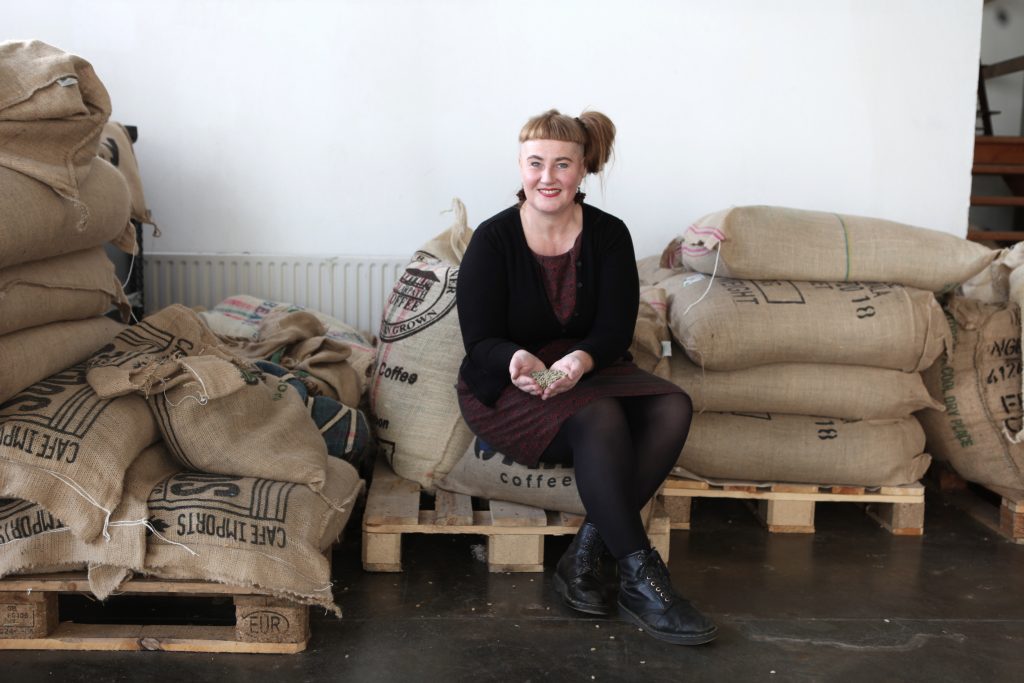
Sonja, thanks for participating in the interview. Please tell me about your background.
I am from the north of Iceland, from a tiny town called Akureyri. When I was growing up, I thought that the only thing I could do was training horses. That was my main activity. My family is still working with horses, up north in the countryside.
I left my parents when I was 17 because I was an adventurous kid. When I look back, I understand that my parents probably didn’t have a good time raising me.
I had crazy ideas, and I have always wanted to do something different.
So I moved from my parents to Reykjavik. I started my own life, and I went to school to be a carpenter. I wanted to be an architect, but I thought it would be a smart move to learn carpentry first, so I would understand how to use the material.
And to work with your hands?
Yes, exactly. But when you’re working outside on the top of the building, your hair is always a mess, it’s cold and wet… After working as a carpenter for 5 years, I decided it was enough. I wanted to work indoors! That’s when I saw an ad from a small roasting company here in Iceland. They just opened a small coffee shop. I applied for a job, and this was my first time working with coffee. In 1995, I started as a barista. It was a completely new world for me.
What does it mean to be a barista?
A barista is an old traditional profession in Italy. It is a person who works around the espresso machine, making espresso, cappuccino, etc. When you were preparing coffee in the rest of the world, you were just a person working in a café. It wasn’t seen as a profession. It was a low-paid and easy job.
We did not have any professional competitions. We had to discover how to dose and tamp the coffee, using the grinder, then roasting. It was an exciting process.
Then in 2000, barista got recognized as a profession. People started showing respect to this activity. They got interested in the origin of the ingredients, the farmer, and the whole chain.
Being a barista is a hospitality job. Of course, you are preparing a beverage for the customers, but you also talk to them. You know instantly if they are feeling down or if they are happy. It is a fascinating profession.
You started in 1995. What happened after?
The place where I was working was the first to offer a takeaway coffee in Iceland.
Every day we would have a little chat with a customer:
What kind of coffee would you like? A filtered coffee or the one from the espresso machine? Do you wanna stay here or take a coffee to go?
All these discussions created some kind of welcoming atmosphere. It has grown into an exciting daily job. I stayed in it for 13 years.
Did you later become a manager, a general manager?
It was a very small company. The owner was roasting the coffee, and then she worked with me in the coffee shop. We only had five people. When I became a manager, I started training new people.
I still was making sandwiches and cakes. At the same time, it also was my job to create training material for everybody. When you start in a very small company, you manage the tasks that just have to be done to grow the company.
People used to train for one-two months to become a barista. With all the training materials you developed, the training period extended to like 8 or 9 months?
To make a cup of coffee seems easy, but it is not. You need to be consistent.
I could teach a person the basics in 2-3 months, and then this person will be comfortable enough to make a coffee in front of a very angry customer or a happy one, etc. However, to be 100% confident as a barista, you have to train for around 7 months. It is fascinating because I teach very young people (19 -20 years old) and sometimes it is their first job.
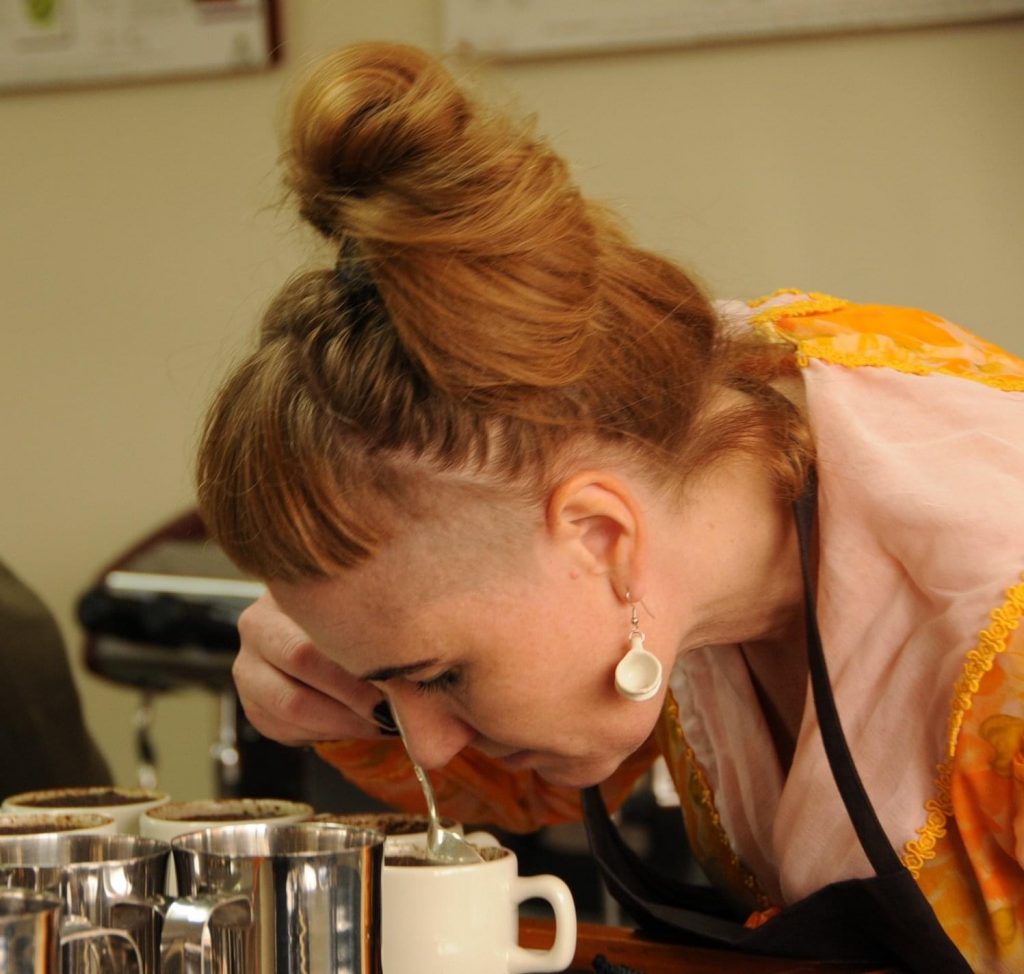
I know that you have worked with people from a difficult family background in the past.
Yes. I’ve had the opportunity to work with few individuals that were having trouble in their lives. Looking back, I am happy to see that many are in better places.
Nobody goes to school to learn how to work in a cafe. We all come from different places. I am a carpenter, someone could be a lawyer, but we meet together in a barista profession. And I think that is why this industry is so complex, diverse, and very attractive.
I am interested in people and helping them to find their own path.
Is this why you decided to open your own company later?
Yes. After 13 years with Kaffetaar, I wanted to have my own area to train and continue self-developing.
I started my own company in 2008, two months after Iceland declared bankruptcy!
It was a challenge to have a business in this weird time. But I think that the coffee business will survive at all times because everybody needs coffee!
It was a third-wave coffee company. What exactly does the third-wave mean?
It means it is based on the « bean to cup » process, from the farmer to the customers, the individual brewing. The second wave company is a company like Starbucks and other big chains. Or the espresso companies with a little bit of food, but not with 100% transparency.
The third wave comes with smaller companies with more interaction with the customer.
Have you been running the same company since 2008?
No. The company I started in 2008 was very interesting, but things were complicated. For example, the espresso that we were serving to our customers was of a single origin, only a bean from one farmer.
No other company in Iceland had ever done that. It was a huge challenge for me, but I wanted to try something I have never done before.
Five years later, my business partner and I decided that we could not continue together. She bought me out of the company.
I started another business, and this is the one I have now. This company is also a challenge. I am again challenging myself and the industry in Iceland.
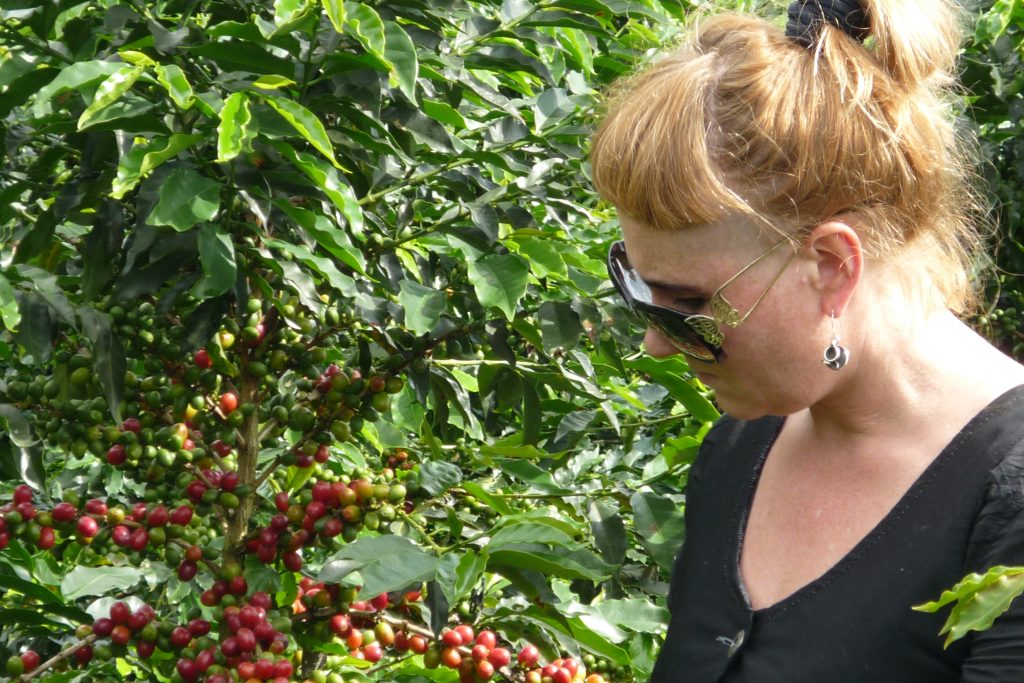
Can you explain the path from a coffee seed to our cups in the morning? How long is the process?
It is long.
When the farmer puts the seed into the soil, it takes 3-5 years for the coffee tree to produce the cherries. After 3 to 5 years, the cherry is ready, and there is one harvest per year. You can see it in the tree when it starts to blossom. There is a beautiful white flower with 5 arms.
When you see this flower, you know that it is time to harvest.
The flower stays for 1 or 2 days, then it dies, and the cherries start growing.
It takes nine months for the cherry to be ready, and inside one cherry, there are two coffee beans. So the farmer is picking the cherry. Everything is handpicked.
Sonja Björk Grant
I am only buying coffee with this specialty coffee aspect.
Then you need to take the fruit away from the beans. You do that with the machine. You have to wash it and clean it. Then you have to dry it and pack it and ship it to Iceland. The whole picking process takes 4 to 5 months.
Before I get the coffee, I get samples shipped to me. A sample has about one hundred grams of coffee.
I roast it in my roastery. I taste it, and I choose all the coffees that I want to buy from that sample.
What are your favorite countries to buy coffee?
These days, I am buying from free farmers in Honduras. I also have coffee from Guatemala. As we are talking, I am drinking the one from Guatemala. I also get beans from Ethiopia and Nicaragua. So it is mostly South America, Central America, and a little bit of Africa.
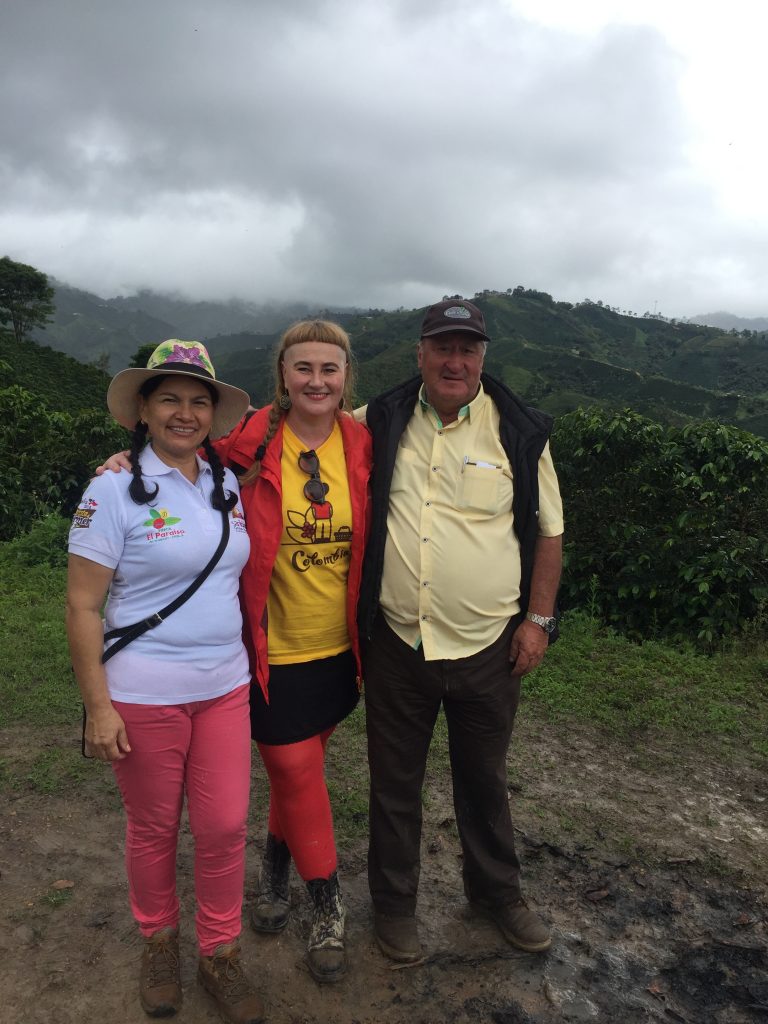
How do you choose it? How do you decide between the Ethiopian one and the one from Honduras?
I always want to have a little bit of diversity of coffee for the customers. I understand the market wants to have a clean flavor, so Central and South America are what the market wants.
I need to make smart decisions when I buy something from Colombia or Honduras, or Guatemala to be sure that I can sell. Then I choose « a candy » for the nerds, something from Ethiopia or Kenya. But it is not for the mass market.
Sonja Björn grant
I ask for samples through a broker, as we have brokers who are collecting all these coffees.
They ship the samples to all the buyers. I roast them, and we have a blind tasting.
I get Columbian coffee from ten farmers. I blind taste all these coffees and decide which one I am going to buy.
I ask for a range of prices. I do not buy very expensive coffees, but not the cheapest ones either. I get the ones that I know I will be able to sell at a reasonable price.
Once the beans are in your roastery, what happens next?
This is sometimes a tricky part, because, you know, the coffees are changing.
You have the first crops that are very strong with the humidity. We need to measure the humidity before we roast them. Sometimes it takes many roasts to figure out the profile and whether we are happy with the coffee or not.
When we are happy, we produce it and advertise it, and we start selling it. We make it once a week.
Every time we roast on Tuesdays.
Wednesdays, Thursdays, it is completely full of coffee, but then on Fridays, the shelves are empty.
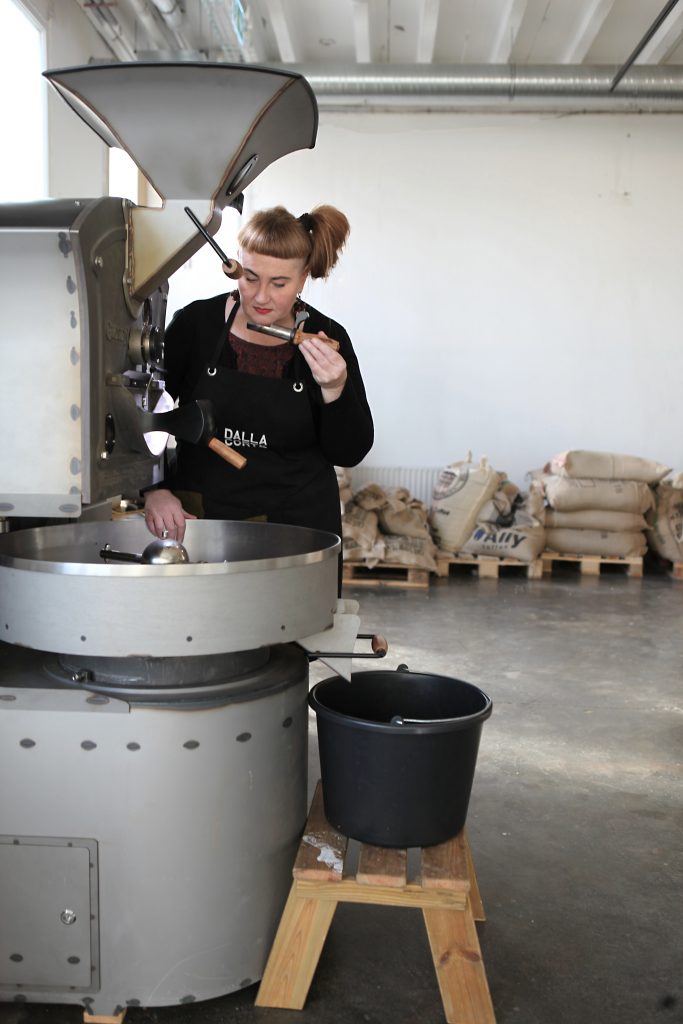
Can you tell us about the Barista World Championship?
Initially, I was in the group of Scandinavians who decided to create a Barista Championship.
We told ourselves: Let’s have a coffee-making competition because we need to raise the barista profession’s standards.
The first world competition we held was in the year 2000.
You have to start with a national competition, and then the national champion goes to the world one.
I was the trainer of the Icelandic national champion and one of the organizers. This caused many conflicts, obviously.
But we were facing the unknown.
We grew into being judges by creating the judging training program. Then, later on, in 2004, we started certifying judges. You had to go through training, a certification before you went on stage to judge. I do not know why it happened to me, but I was growing into doing this.
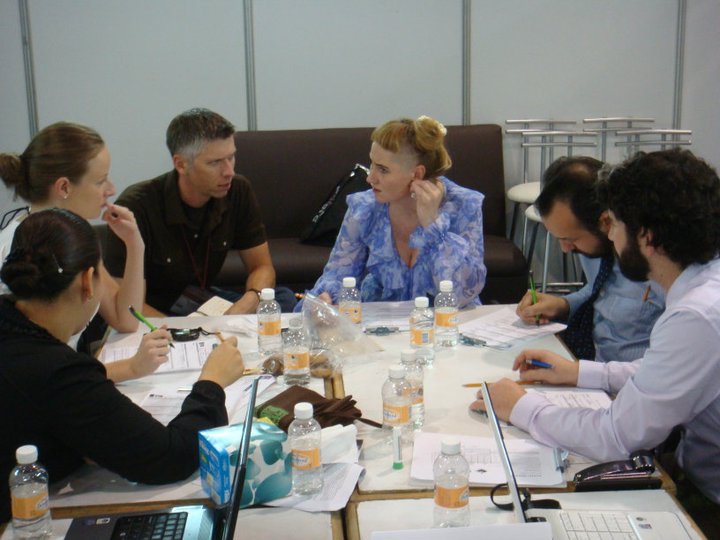
Are you still judging?
I am still judging, but I stopped running all these events years ago. Now it is a huge company. Around it, there is a lot of money going from the sponsorship point of view.
We have seven world championships. Now it is a young people’s competition, but there are still oldies like me…
I am still certifying the judges, but this year, it is weird due to pandemics, as we do not have any events.
Do the certified judges work in all the national and international competitions?
International championships. We do not require you to be a certified judge for the national one, but you need to train for two years before taking the International test. So you train at the national level and then you would fly abroad to take the test.
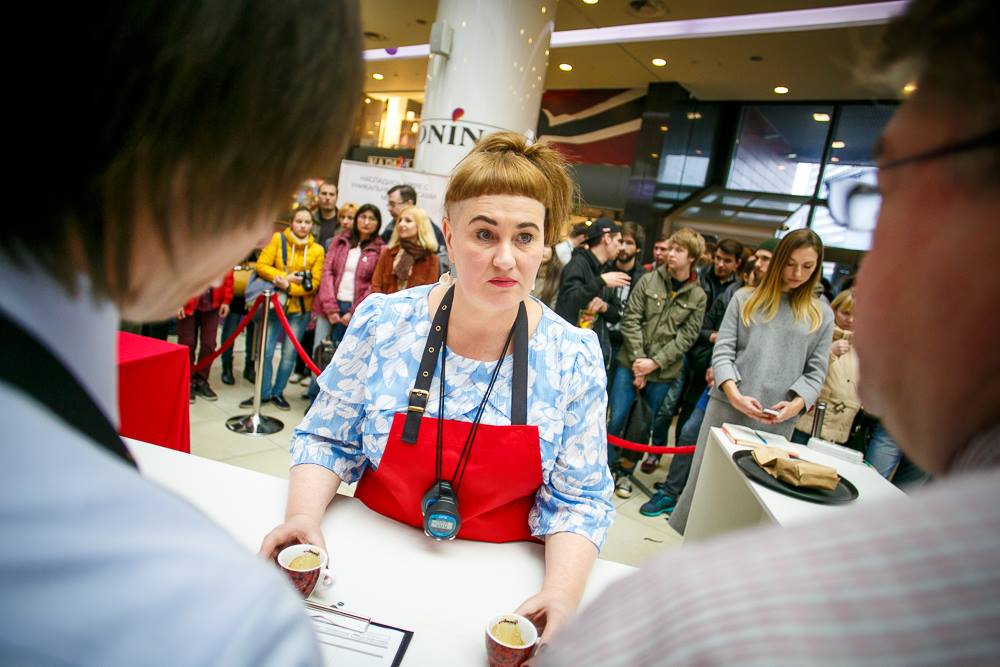
The first female winner of Barista competition came only in 2018. Why? Are there more men in this industry than women?
Yes. More guys are more visible. We had 18 world champions guys before Agnieszka Rojewska from Poland, who won in 2018. We have been having this discussion for a long time because all our rules have no gender.
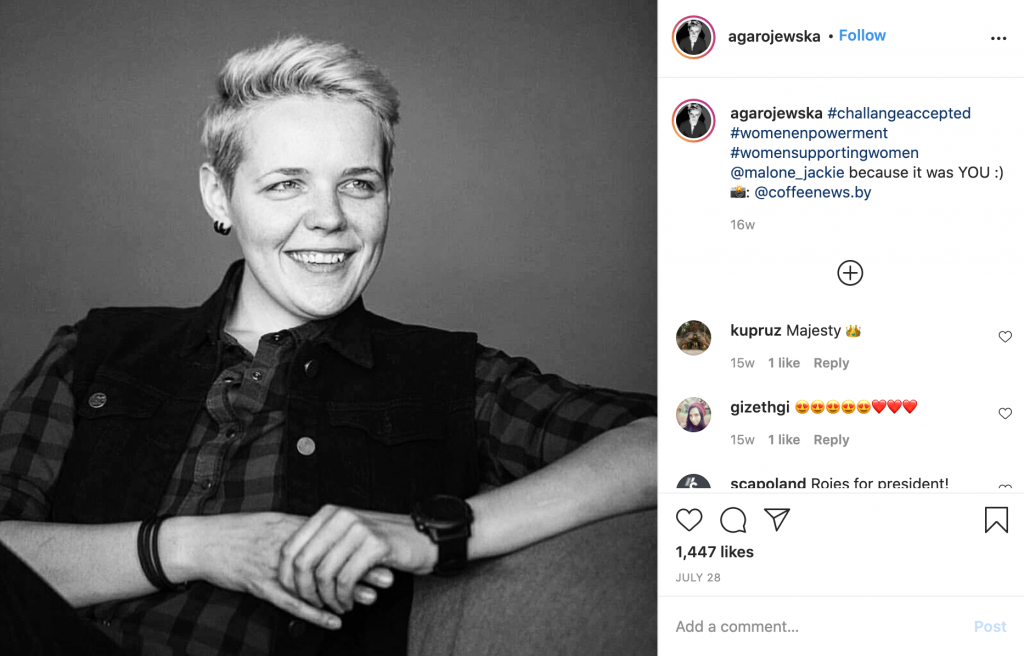
A barista is like “It.” For some reason, there are so many men who want so badly to win that they do everything for it.
Women are entirely different. We are family people, taking care of the kids, we do not have time to practice 24/7. We do not want it that badly.
But Agnieszka came in, and I’m so happy. I worked with her for a long time in different competitions. She really worked for this very hard for many years. She’s a fantastic role model. The year after came another lady from Korea, Joo Yeon. She also became the world champion.
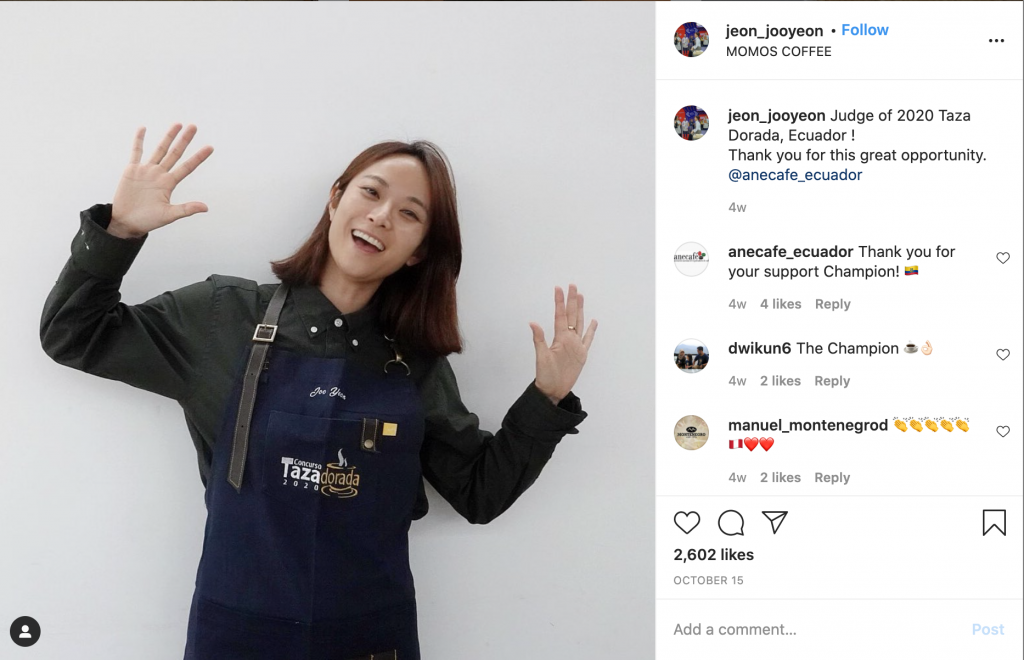
I am trying to see if other female baristas are hungry enough to do it.
Do you think it depends on women’s mentality, as you say, whether they are hungry or not? Are not there other obstacles that prevent women from going higher in this industry?
I believe so. Maybe many females in the coffee industry would disagree with me. I think it is more from the individual if they really want to win and sacrifice to get to that point.
I understand that the Covid crisis impacted you a lot. How are you planning to continue?
Half of my coffee life is traveling and training people in different countries. I was supposed to be in Mexico now in a Coffee Roasters Guild meeting. We are starting the organization for coffee roasters.
I participated in creating the European organization in 2015. It was unified with the American organization, and it is called the Coffee Roasters Guild (CRG).
We were supposed to have our yearly in-person meeting.
Now all meetings take place online. Instead of having a one and a half day-long discussion, we boiled it down to 3 hours!
Which is good, I like it. But I am also a part of different kinds of programs, such as the “Barista & Farmer.”
It is a reality show. The baristas have to be on-site to pick up the coffees. It is impossible to do it online.
Tell me more about this show.
It was created by Francesco Sanapo in Florence in Italy. He wanted to bring baristas to the origins to help them understand where the coffee comes from. And he wanted to film it. The first year was in Porto Rico with only Italian baristas. Then he decided to make it international. They had to choose 10 baristas from different countries out of 300 or 400 baristas applied to be on the show. All participants get their own 15 minutes of fame. They are paired up with the farmer, and it is a competition. Every day we had 5 or 6 competitions. Everything was filmed. We were always with the film crew.
What was your role in this show?
They have three judges. I have been one of the three judges for two seasons. The first season was filmed in Brazil. The second one in Colombia.
Being one of the judges means you need to be in front of the camera. It was fun, I liked it. We would get up at 4 o’clock in the morning, and everybody went to bed at 8 o’clock in the evening.
Living on the farm is not comparable to a five stars hotel.
Is it something like Top Chef or Masterchef for the coffee industry?
Absolutely.
You are accomplished and successful in life. What does success mean for you?
I’m happy about what I have done when I look back. I am 50 years old now. I am surprised I am 50 years old! But although I had very successful businesses, I am horrible with money. I will never be a rich woman.
You do not feel like 50? Do you feel younger?
Yeah! I don’t think I’ve finished everything I wanted to do.
My new company is all about hospitality and transparency. It is my new challenge. Because of Covid, I will have to adjust my ideas of how I want this company to be.
I am trying to find a way to implement most of my ideas without giving discounts on what I wanna do.
When I think about success, it is like: I am happy, but I know that I can do more.
Sonja Björk Grant
I wanna do more, but I do not know precisely what. Maybe after another 25 years in coffee, I will get back to horses!
For me, success is not about money… I have my family. I own an apartment. I have friends around the world through business. I am satisfied although I can do more.
You travel around the world a lot. Is it satisfying your hunger for traveling?
Because of my traveling, because I am always around people, I really enjoy being home.
I am happy to spend my weekends at home. I love listening to music from my vinyl collection.
This pandemic is a chance to stay home once in a lifetime.
However, if I had to close my company during the lockdown, I would probably be worried like everybody else.
Is success a gender thing in the coffee industry?
Yes, I think so. It is like stating the obvious that men and women are different.
I believe that we have different points of view on satisfaction. And what we consider as enough. Sometimes what I consider as enough won’t be the same for my brother. He is very successful in what he does.
We are so different, but we are so the same! Everybody’s aim is to be happy.
Having a passion for coffee is 100 percent enough for me. But in my industry, it might be different.
I have friends from different countries. I know guys wro running their own companies, and it seems like it is never enough. But sometimes you just need to be happy with what you have!
Do men have trouble with this?
I think so. I do not know any guy around me who has his own business and is simply happy.
I have a male business partner. We are a very good combination.
I am more about keeping our consistency, and he pushes, he wants to do more and more, so we meet in the middle. We are good together.
How do you maintain your rhythm? Do you procrastinate?
This is probably the biggest thing that I’m training myself not to do.
Let’s take snoozing. I don’t snooze. This is a dialog I have every morning: If I snooze, I give myself extra ten minutes. Am I gonna be less tired in ten minutes? No. So I will just do it.
I try to step towards my fears, what I’m scared of.
It is so easy to postpone some tasks, but I try to take this step to get them done! But I have to admit, I am human. Sometimes I can postpone.
I am just trying to do my best.
Sonja Björk Grant
What are your recommendations on how to keep the rhythm? Meditation, books, music you love?
I love reading Icelandic authors. I really like crime books.
I get inspired by different things: when I take a walk to the harbor, on the way to my roastery, I sometimes take an extra walk just to feel the sea. Smelling the sea is, for me, pure energy.
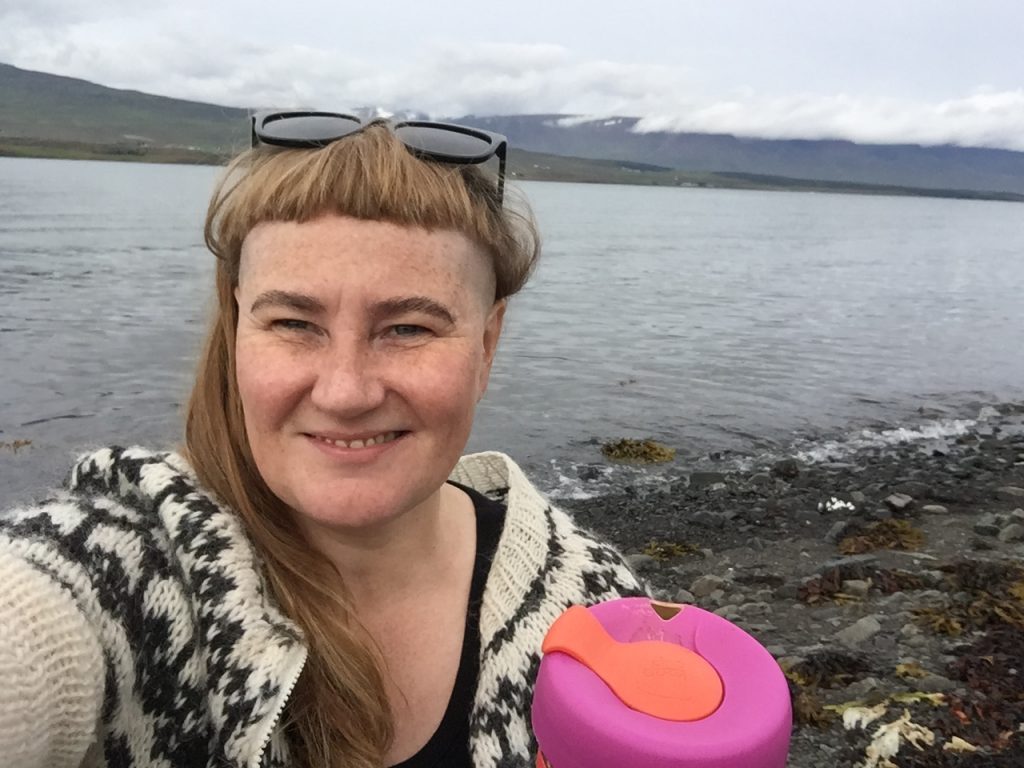
I get inspired by colors. I love to cook, and I cook by colors. This is like a meditation for me. I do not really meditate. I used to exercise a lot, but I do not do any sports now, except for walking a lot.
I meet with industry people. Especially now in lockdown, there are international groups with judges, and we meet two times a week. We are all having our own businesses, and it’s good to come together and talk about the business, to give each other a little bit of feedback, as we are in different stages of a pandemic.
When I go to bed, I try to read a little bit. I’m normally a very positive person, but I have my bad days as well.
You were talking about cooking by color – what is it about?
If I’m using pepper, I try to use all the colors. I love eating beautiful food.
The same with coffee – if somebody serves you a beautiful, flavorful cup of coffee, you’ll enjoy it more.
When I go shopping, I try to have all the colors when I’m cooking, with the vegetables or fruits. When I was cooking for my baristas at lunch in my previous company, sometimes I had completely green food and sometimes completely orange, like sweet potatoes and peppers and all that stuff.
For me it’s fun, I love it. It’s a challenge. We enjoy it more, and it’s about the energy you get from it.
What do you like to have for breakfast? Except for your cup of coffee, obviously.
Breakfast is my favorite meal of the day, and I really enjoy it. I always have some eggs. This morning, before meeting with you, I had one boiled egg, a slice of bread with cheese, and a piece of melon. So a little bit of fruit, a little bit of bread and egg. It’s very basic.
Do you have any secret recipes for coffee?
This is my brewing method. This is called Caemex. When you own a coffee company, you like to be closer to the origins of the coffee, so a nice black brew is the best for me. I know I can take all the flavors out of it. It all comes down to how I grained it, the temperature of the water.
It’s also about how I roast it. When I taste a coffee, and I feel the roast, then I know I have failed! The roasting is supposed to bring out only the positive flavors which are already in the coffee bean.
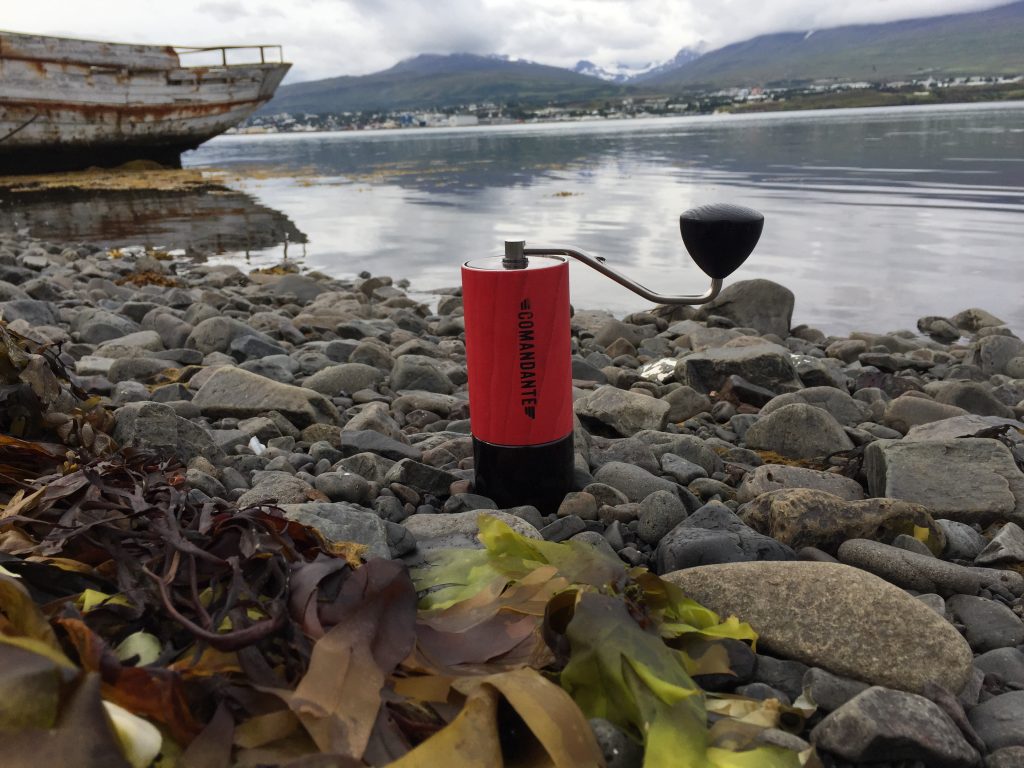
But I do not drink espresso all the time. I actually enjoy drinking black coffee. Now, I’m drinking one from Guatemala, from the smallholders. It is absolutely amazing. I also have a special grinder (picture) from Comandante called the Red Sonja. It was created for me many years ago.
Sonja, it was a fascinating interview! Thank you, and have a nice day in Reykjavik!
Have a nice day in Paris, too. And thank you!